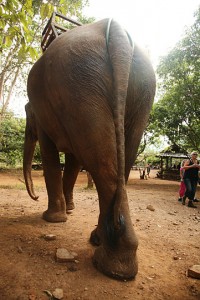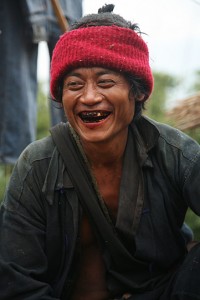Destination Dhaka
Since it’s not possible to cross overland from Myanmar (Burma) into neighboring Bangladesh to the west, I flew directly from Thailand to the Bangladeshi capital city of Dhaka.
Then wandered around the winding alleys of Old Dhaka…
Since it’s not possible to cross overland from Myanmar (Burma) into neighboring Bangladesh to the west, I flew directly from Thailand to the Bangladeshi capital city of Dhaka.
Then wandered around the winding alleys of Old Dhaka…
Here’s an update of the travel itinerary:
– Loop through the Philippines
– Fly in to Phnom Penh, Cambodia
– To Angkor Wat and back in western Cambodia
– Up the Mekong into Laos
– Into the hills of northern Laos
– Cross into northern Thailand and head up north into Myanmar
– Back into Thailand to Chiang Mai before flying out
I did not spend a whole lot of time in Thailand, but that didn’t stop my itchy camera finger from occasionally snapping away here and there.
And so, with no logic or discernible order whatsoever:
Naturally, as soon as I decided to do a multi-day trek, that’s when the travel gods decided to afflict me with food poisoning. Figures.
Ride the elephants, jungle trek uphill for several hours, sleep in a village hut and then have your bowels come under full frontal attack. All in a day’s work.
I did make it through the night. This is surprising, given the noise. Several people slept in the hut, and given some of the snoring, I fully suspect that a grizzly bear snuck in late in the evening as well. Crafty fellows, those bears.
The large hut was on stilts, like all standard southeast Asian dwellings, with a layer of bamboo for flooring. This made the floor creak louder than a haunted house at ghost family reunion, and when anyone shifted their weight in their sleep you’d feel the bamboo ripple effect move under you as well. Never mind when the grizzly had to step out to use the outhouse.
The next morning, I multitasked. Part of me watched the gorgeous scenic sunrise over the green Siamese hills, while the other part of me waged intestinal war and guess-which-side-will-evacuate-first.
Shunning breakfast (and even the smell of breakfast), I nevertheless put my gear back on and continued trekking, my face as pale as the morning fog sifting through the forest floor. I felt and heard the rumbling in my stomach as I walked, admiring the pristine scenery while also on a constant lookout for a nice, private place to fertilize the soil should the need arise.
Down hills, past chilly waterfalls, through virgin mountain streams, over rocks, boulders and logs, and up narrow twisting paths my intestines and I trekked, the sublime nature on display outside inversely mirroring the misery of nature at work inside.
Not the way I’d envisioned the nature trek through northern Thailand, certainly, but memorable just the same.
In northwestern Thailand and across into neighboring Myanmar, we find the small but visually striking Kayan tribe (also known as Padaung or Long-Neck Karen tribe).
Their claim to fame? Coils of brass around their necks that depress their collar bone down, compress their rib cage, and give them a giraffe-like long-necked look. Theories differ on why this custom started, from beautification to protection against tiger bites to religious, but whatever the initial reason, the tradition stayed.
A very small tribe and long-persecuted, about 1,500 Kayan now live in a refugee camp along the Thai-Burmese border, their livelihood (and likely their cultural survival) largely dependent on tourism. That has both pros and cons, certainly, but does not change their unique place in southeast Asia’s rich cultural history.
 My elephant ride did not go as planned.
My elephant ride did not go as planned.
First of all, I didn’t get a “normal,” well-adjusted and well-behaved elephant. Oh no. While everyone else got the large adult elephants, with seats that hold three people across, I was gifted with the small single-seater, a stubborn and uncooperative beast at the height of his rebellious teenage years and afflicted with major elephant ADD.
We didn’t get off to a great start. I’d only just sat down and adjusted myself to a barely comfortable position when I saw my elephants trunk flip back over his head towards me. How cool, a trunk, I thought. Before I had time to form another thought, it brought its trunk right next to my foot and blasted a wad of hot, wet trunk air straight up the inside of my pant leg. Let me add having an elephant sneeze up my leg to the list of things I’m in no hurry to repeat.
Elephants have a slow, ponderous, and often jostling manner of walking. Maybe on a larger, more disciplined elephant this would develop into some kind of predictable rhythm. Mine, however, was constantly distracted. Two steps forward and then oh look, bushes! Turn sideways and off goes the trunk to uproot a bush and start stuffing into mouth. Another step and then hey, I think my head itches, let me scrape it against this tree. A few more steps and then wait a minute, is there something on my back? Send trunk to investigate.
Going downhill was the worst. Every jarring step pitched me forward precariously on my little seat, grasping mostly at air and praying that my distracted fellow wouldn’t trip on an exposed root and send me flying off, slimed leg and all.
The downhill jarring was so bad that by the time we reached the river, my seat was perched precariously sideways on the elephant, starting to fall off. The saddle was slipping on the small elephant’s narrower back. I started flailing and yelling at the elephant guides for help and one rushed over to right me up. None too soon, in my opinion. I spent the remainder of the elephant trek making various contingency plans should I need to hastily evacuate my perch.
Of the different tribes visited in Myanmar, the Eng were my favorite. While all of the tribes were generally welcoming, the Eng were particularly so, and seemed genuinely good-natured.
The Eng are easy to recognize: both men and women traditionally wear all black clothing with colorful red trim or stitching, and most work their way up to some very large holes in their ears. While these hold sizeable earrings the majority of the time, during festivals and other special occasions those are replaced by bouquets of pretty, colorful flowers (one of the images below shows a woman with yellow flowers in her ear.)
The Palaung are another tribal group living in the Golden Triangle area, primarily in Myanmar. Traditionally the women were easy to recognize from their large silver or gold metal belts (in the village I visited, the belts were silver, so this tribe is known as Silver Palaung), and the men from their expansive chest and leg tattoos.
Both practices have mostly died out. I did have tea with one 96-year old man covered in tattoos and his youngest daughter (whom he had at the tender age of 76), but the practice was frowned on by the British and is now almost nonexistent.
The Akhu tribe is a sub-set of the Akha, formed I believe by some inter-marriages with another hill tribe.
 Seeing someone with jet black teeth and a dark red crust on their gums for the first time is quite a shock.
Seeing someone with jet black teeth and a dark red crust on their gums for the first time is quite a shock.
We are so used to equating whiteness of teeth with good health and hygiene that its direct opposite is jarring. And yet, even this is merely cultural, a product of how we were raised. For generations and generations of southeast Asians, teeth darkened to a very dark red by chewing betelnut (a mix of areca nut and the Betel leaf) were considered the height of beauty and desirability.
Betelnut is a mild stimulant (like strong coffee) and, like chewing tobacco, involves a lot of spitting. Little red splatches everywhere are a telltale sign. On the 5 hour bus ride to Kengtung, for instance, our driver made me nervous by constantly taking his eyes off the winding mountain road to lean out the window and spit.
It’s possible that the practice started out as a means to protect the teeth from cavities, as it is true that the staining does produce a definite coating on the teeth. On the other hand, it’s also carcinogenic, increasing your risk of oral cancer ten-fold.
While the practice has died down in all but the most rural and remote areas of southeast Asia, it was once widespread. Imagine if chewing Betelnut had also caught on with the colonialists and imported back to Europe like smoking was: our beauty industry would certainly look vastly different.